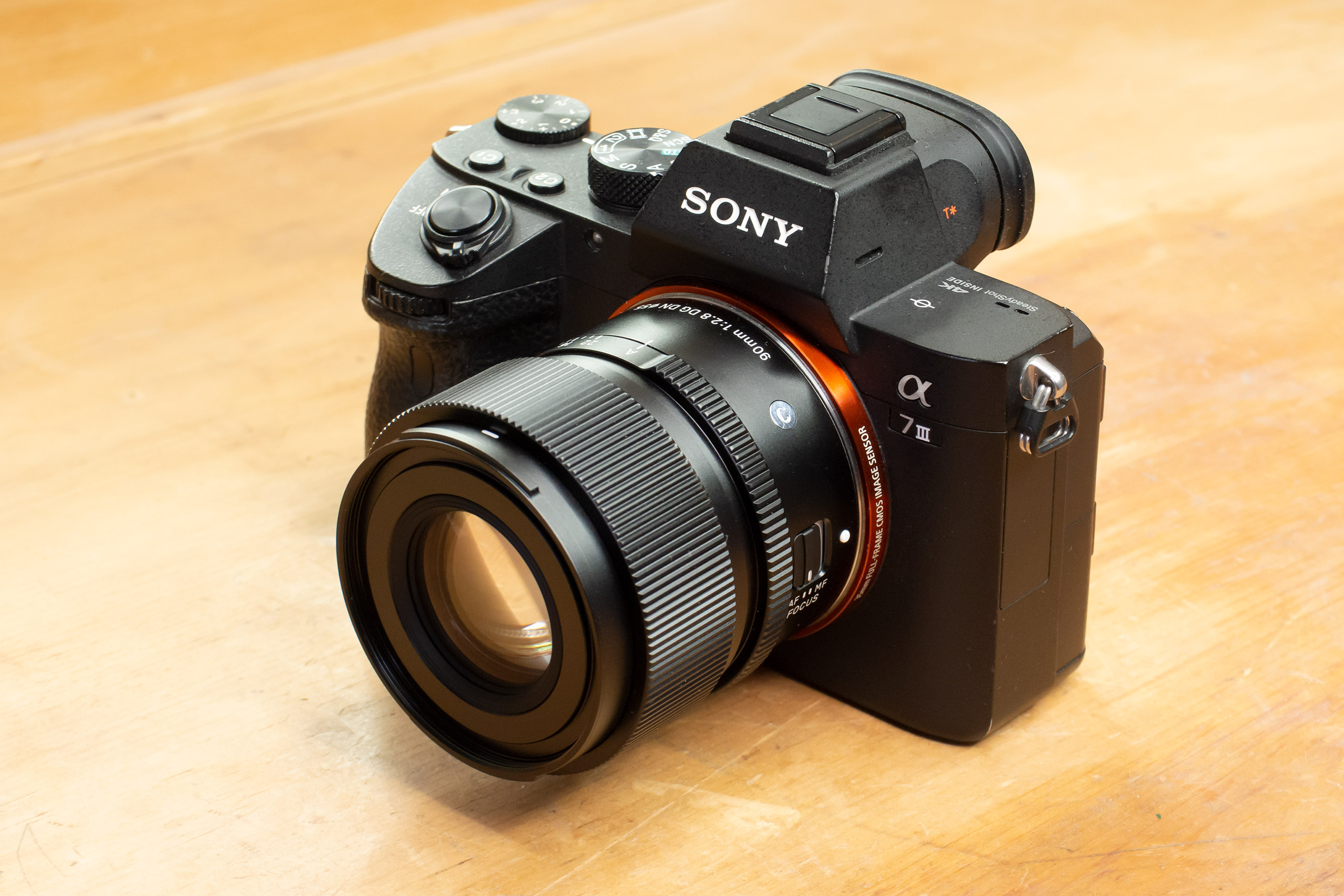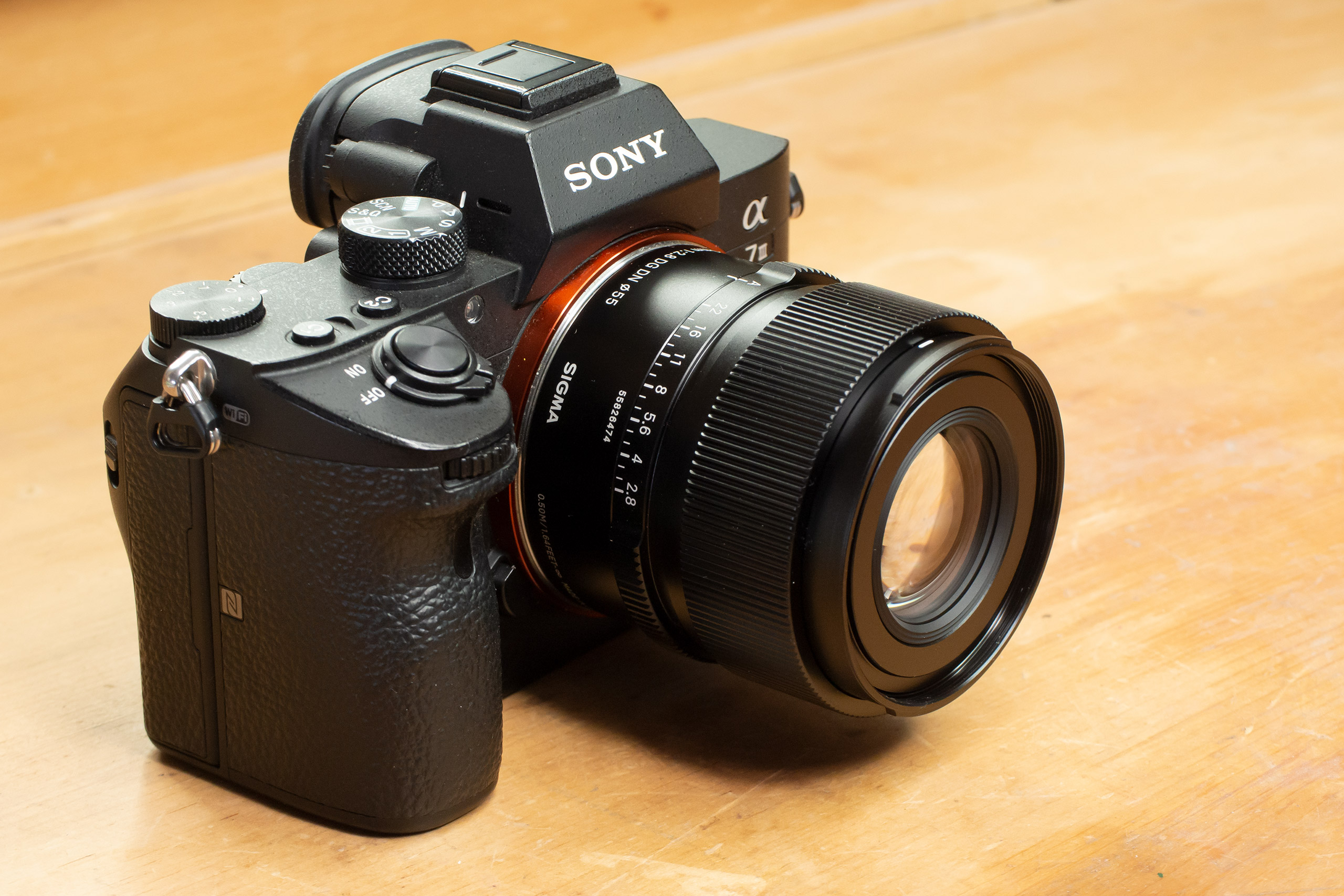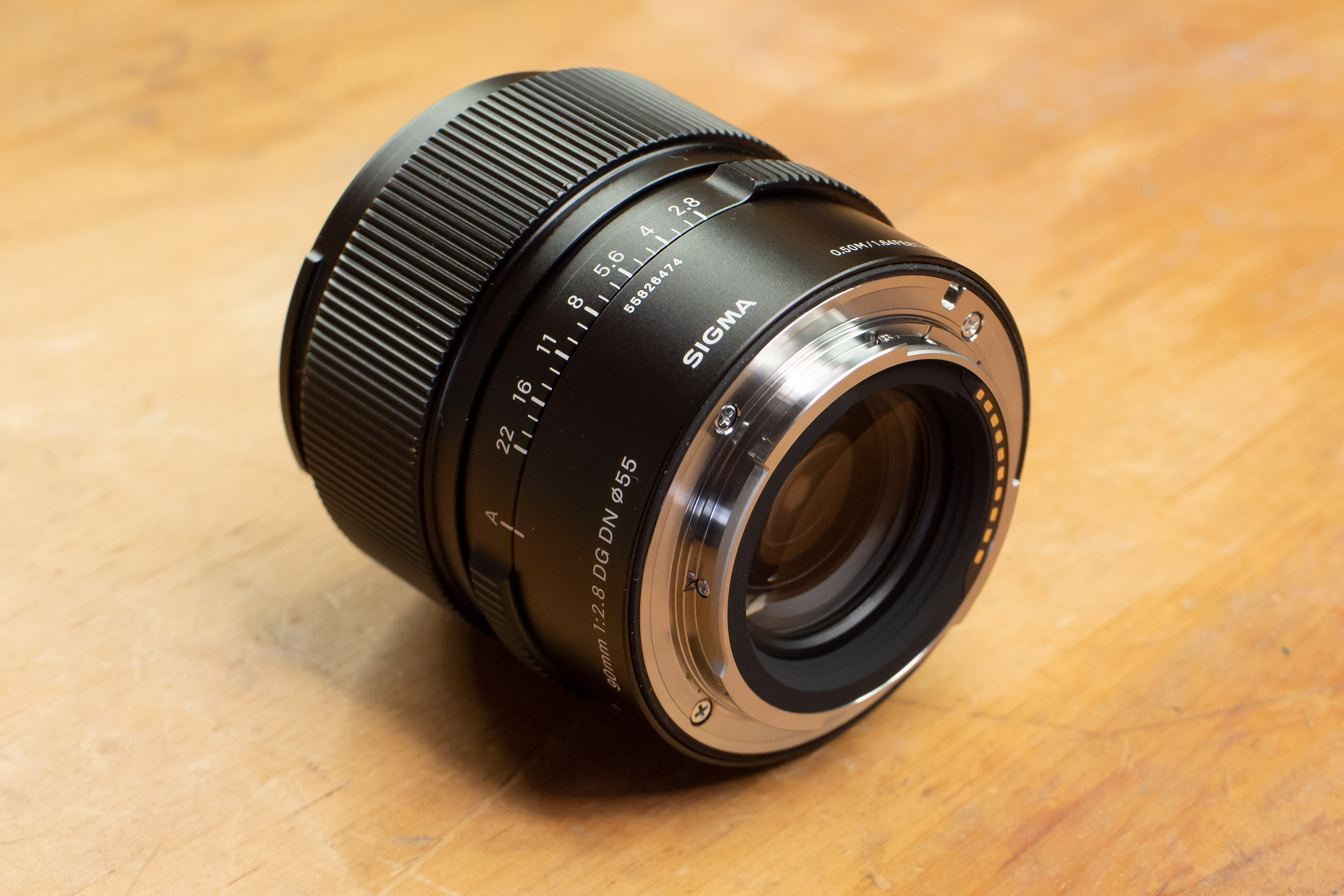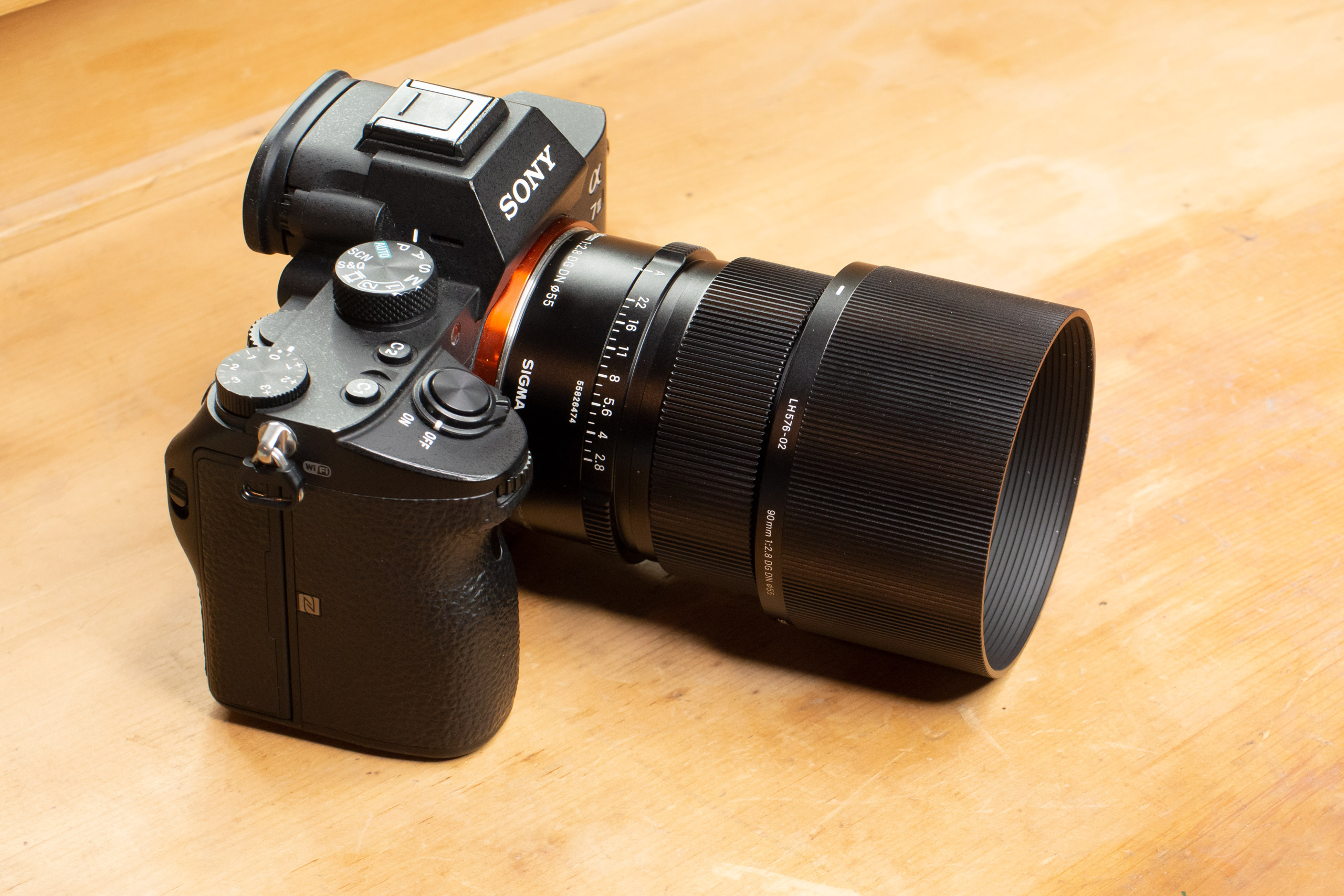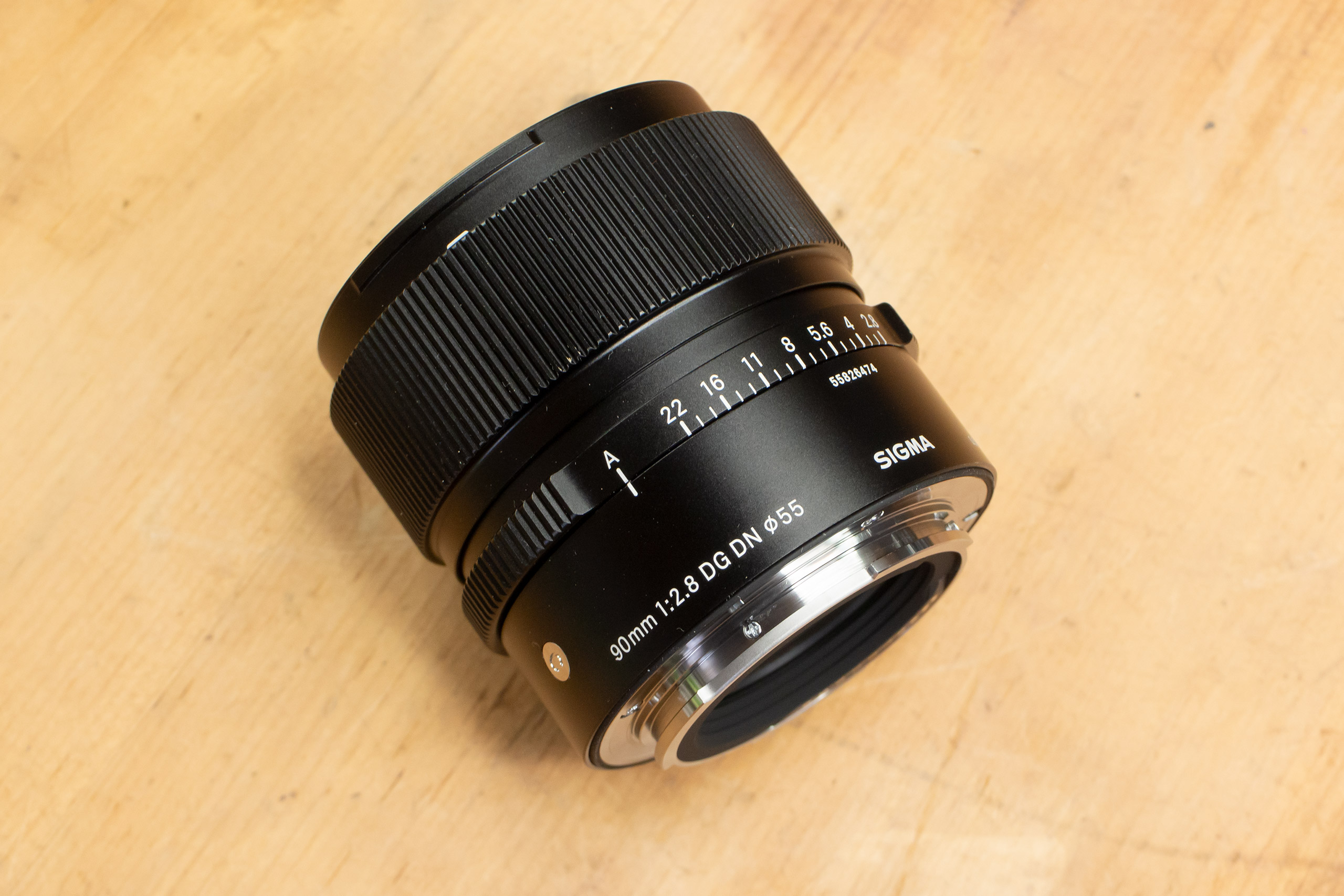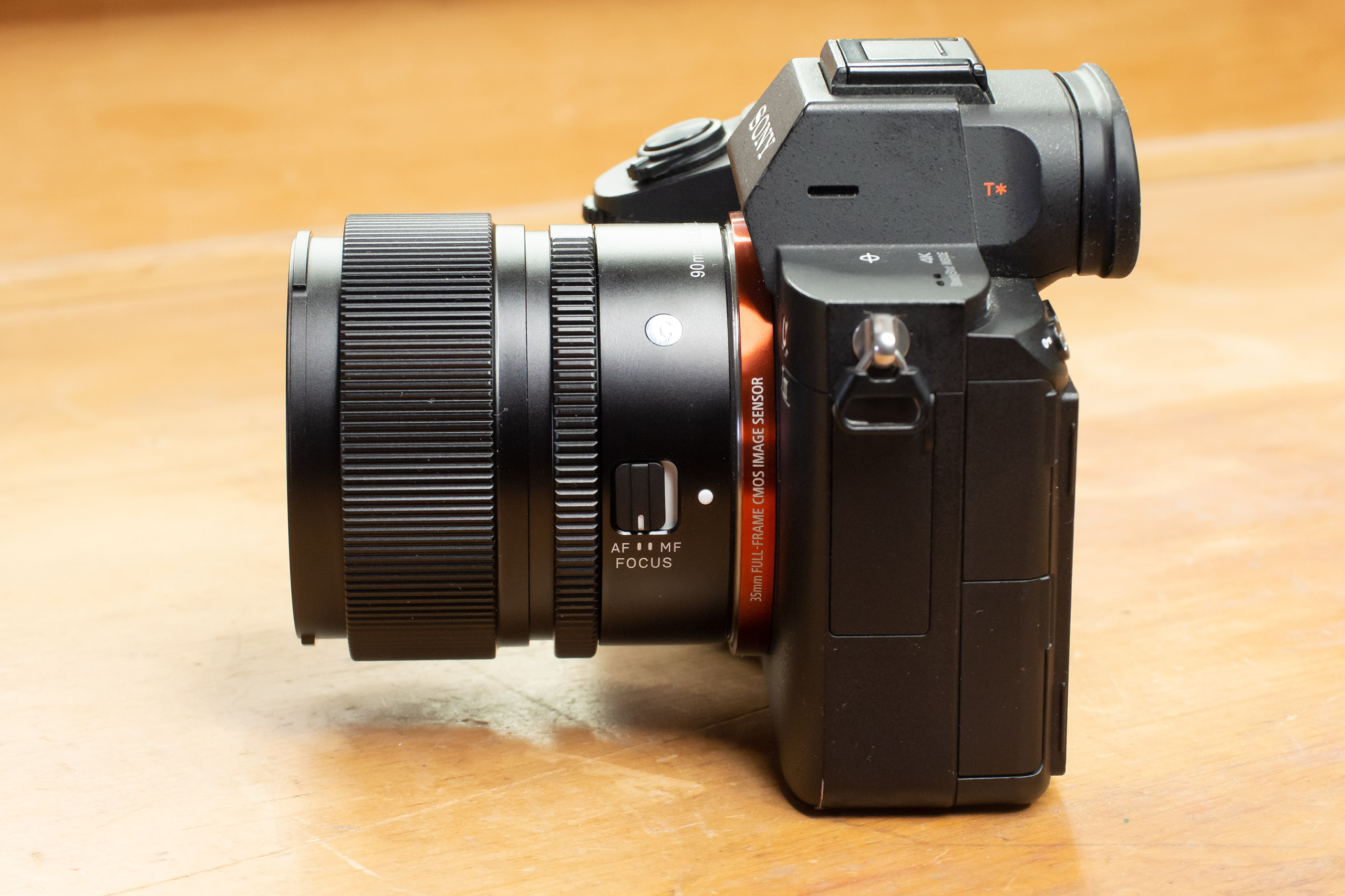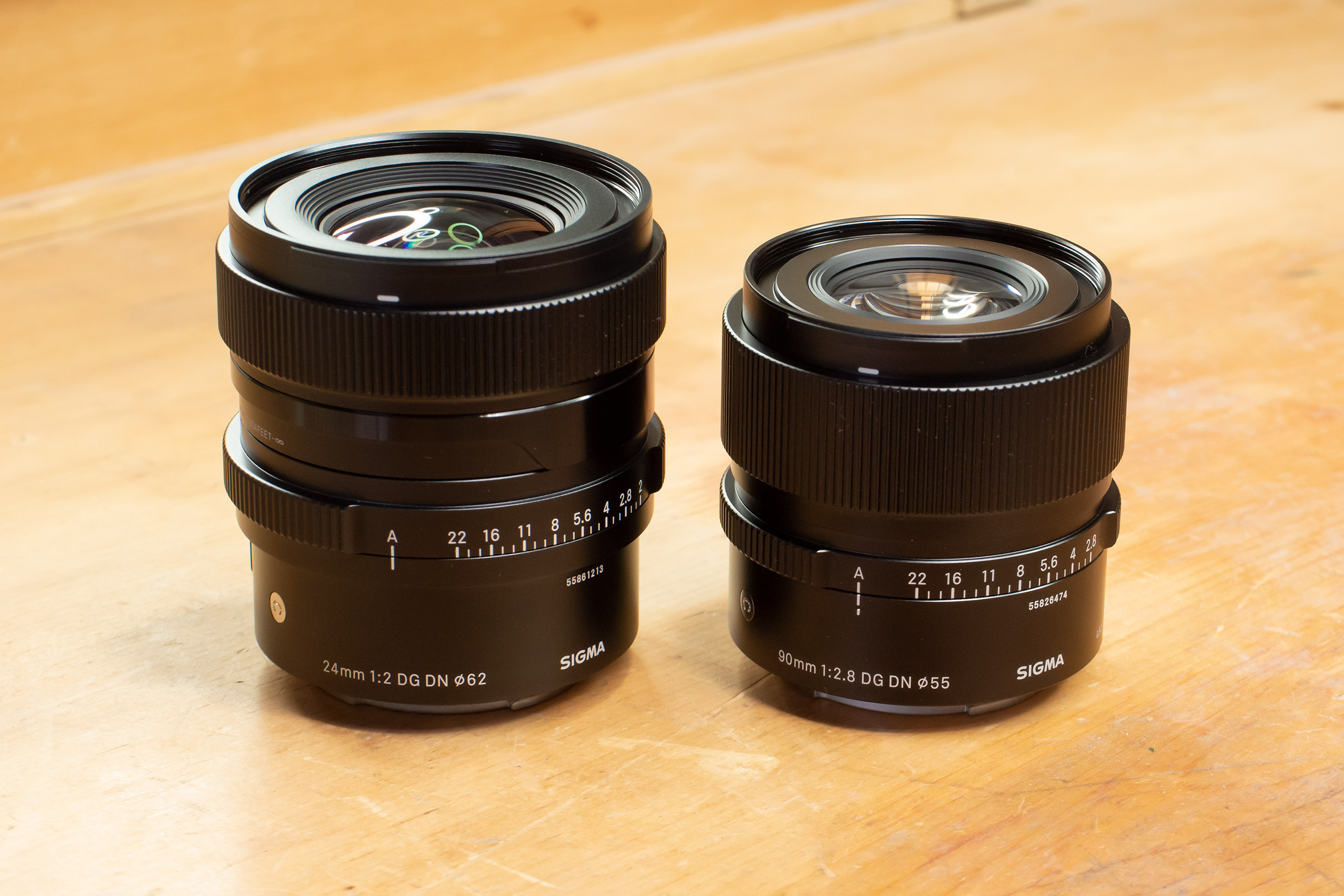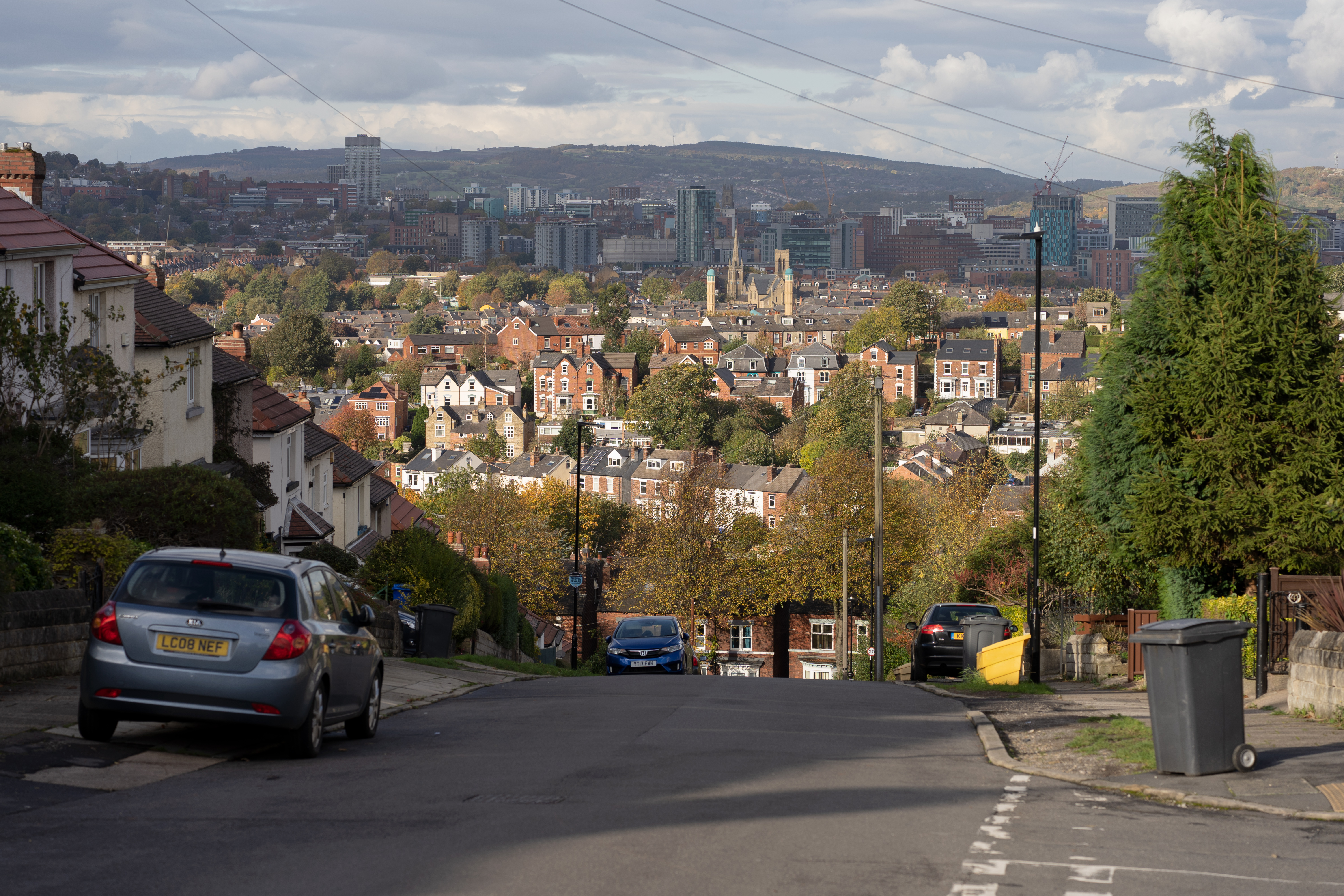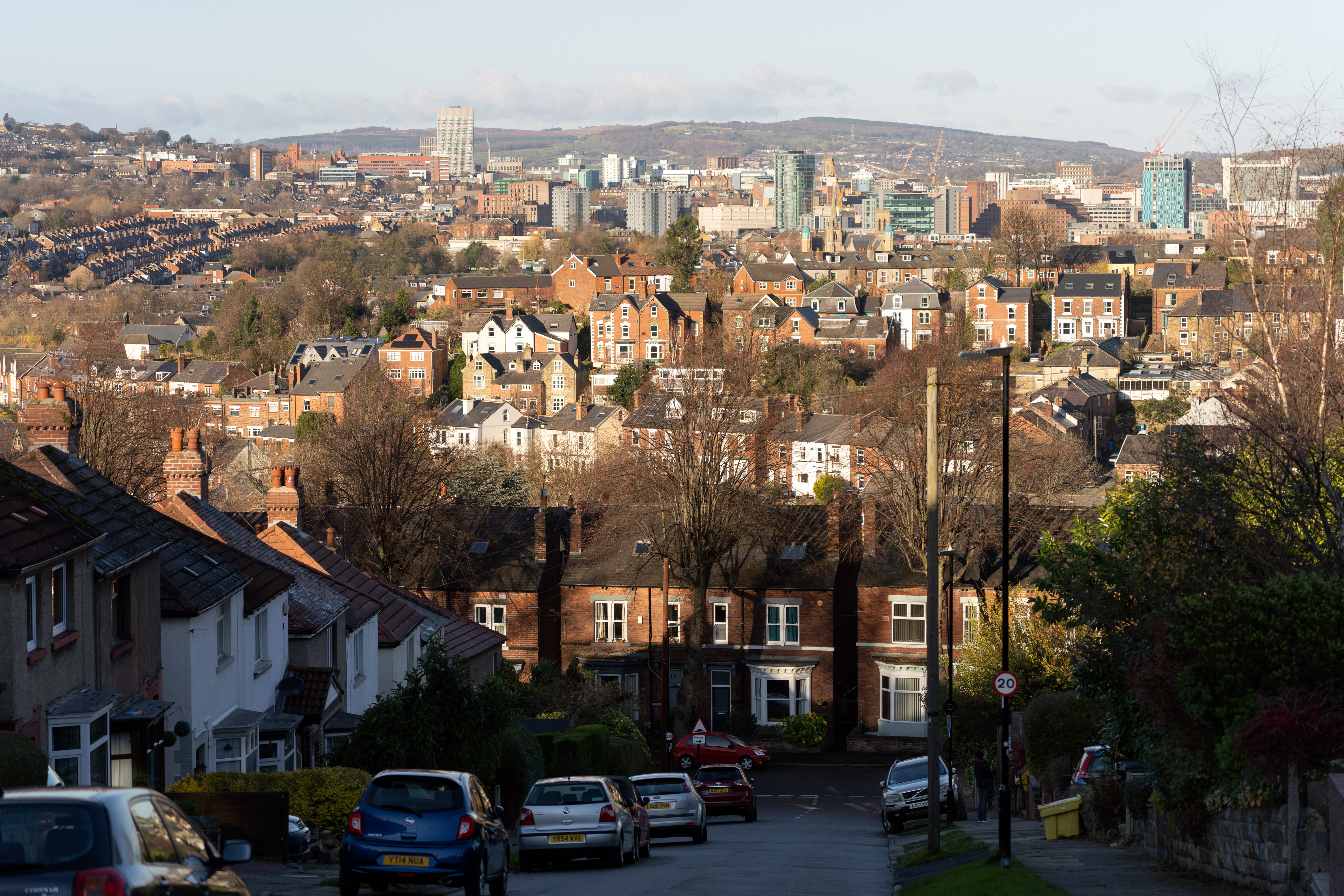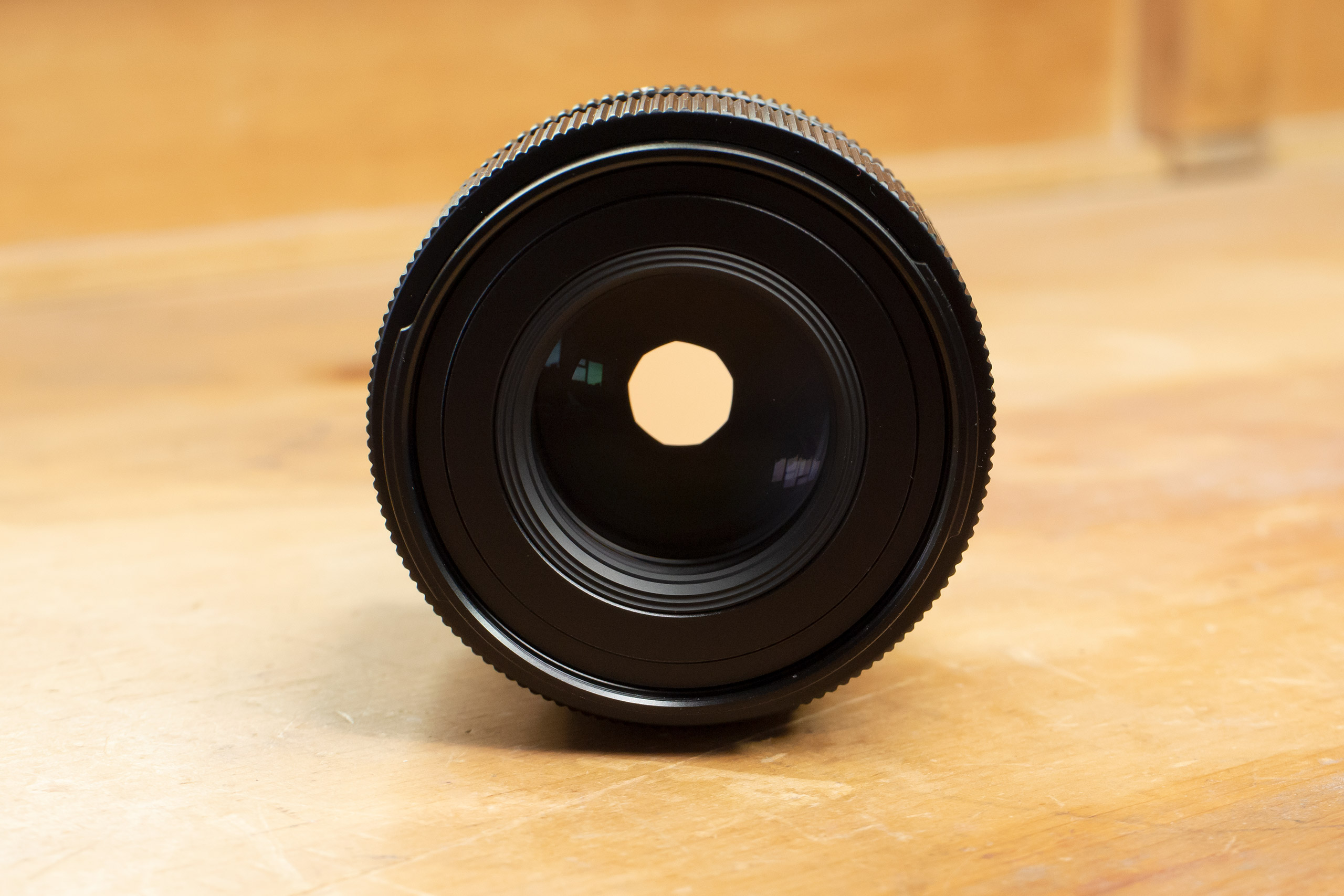The Sigma 90mm F2.8 DG DN Contemporary lens is one of the most compact 90mm lenses available for full-frame cameras. Designed specifically for mirrorless cameras, Sigma have been able to optimise the size and weight, whilst still offering exceptional image quality.
This is the sixth lens in the range of I series lenses, with the most recent, the Sigma 24mm F2.0 DG DN, also being released at the same time as this lens. Sigma are part of the L-Mount alliance, and this lens is available in L-Mount and E-Mount, designed for full-frame mirrorless cameras.
Sigma 90mm F2.8 DG DN Features
Being part of Sigma’s range of more compact lenses, the 90mm F2.8 lens has a weight of just 295g, and a height of 64mm.
This makes it a good match for those looking for a lightweight option for the compact L-mount mirrorless cameras from Sigma, Panasonic, including the Sigma fp, and Panasonic Lumix S5, and Sony’s E-Mount cameras such as the Sony Alpha A7 IV, and Sony A7C.
Designed from the ground-up for full-frame mirrorless cameras, by correcting some of the optical issues in software, Sigma has been able to optimise the size. For example, correcting vignetting is an easy task for a camera’s built-in lens correction, and this has allowed them to make a smaller lens than they would have otherwise been able to produce.
The lens is designed to give high levels of optical performance, even when shooting at the maximum aperture of f/2.8.
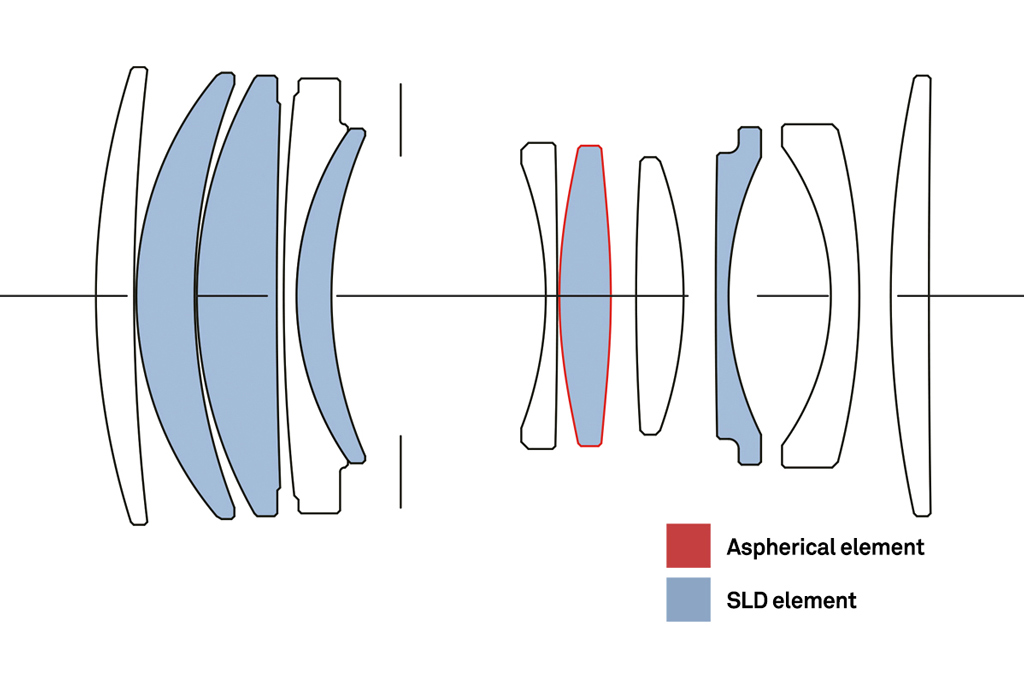
The lens’ optical construction is made up of 11 elements in 10 groups, with 5 SLD elements, and 1 aspherical element.
The lens is made up of 11 elements in 10 groups, with 5x SLD elements, and 1x aspherical lens elements. Sigma say this optical construction is designed to reduce axial chromatic aberration that cannot be corrected in-camera.
There are 9 rounded diaphragm blades, which should give smooth round bokeh. There’s a minimum focus distance of 50cm / 19.7inches, and the filter thread size is 55mm.
The lens measures 64×59.7mm, with a weight of 295g. This makes it suitably lightweight for smaller cameras as well as larger models. On the Sony Alpha A7 III, it feels like just the right size, being quite portable.
In line with other I series lenses, the build of the lens is an all-metal construction, with precision-cut aluminium, as well as a durable brass bayonet mount. Despite the “Contemporary” range being Sigma’s “entry-level” range, this lens is far from entry-level when it comes to build-quality, except for perhaps the lack of full weather-sealing.
So while the lens is not specifically weather-sealed, it could be considered “weather-resistant” thanks to the oil and water resistant coating on the front of the lens, as well as a dust and splash resistant mount, thanks to the rubber seal on the rear.
The lens features Sigma’s Super Multi-layer coating to suppress flare and ghosting, preventing reflections within the lens. It also uses a high-speed stepping motor, which gives quiet fast AF performance, suitable for both stills and video use.
There’s a solid metal ring for the aperture control, and this adds a nice level of manual control to the camera. The aperture ring gives you a range from f2.8 to f22, as well as an A/Auto position, with 2 stops in-between the main aperture settings. There is a stronger level of resistance between A and the aperture settings, to help you avoid accidentally switching between these. There is no option to make the lens clickless.
As the lens doesn’t feature optical image stabilisation, if you would like to have image stabilisation, you’ll need to ensure you pair the lens with a camera with in-body image stabilisation (IBIS).
In the box you get the choice of a standard lens cap, or the magnetic metal lens cap. You’ll also find a round lens hood, that is made out of metal. The lens is also compatible with the Sigma USB Dock UD-11.
Sigma 90mm F2.8 DG DN Build and Handling
Regarding the feel and handling of the lens, the manual focus ring feels good, with a great level of grip on offer here. In fact, the manual focus ring is larger on this 90mm lens, than the recently reviewed 24mm lens, which is a little odd considering this lens is smaller than the 24mm lens. The focus ring features an electronic fly-by-wire design, with no stops, so that once you’ve reached the focus limit, you can continue turning the focus ring and nothing will happen.
The metal lens is designed to be ergonomic, and with a simpler design than the Sigma 24mm lens, there are less “jarring” edges on this lens. The aperture ring has neatly designed ribs for grip, with this raising up from a smooth surface at the edges of the labelling. The aperture ring features click stops, and there is no switch to de-click the aperture ring.
On the subject of labels, the printing on the lens is of a very high-quality, being etched and painted rather than simply painted or printed on, meaning that even with extended use, the labelling should stay intact.
There’s a side AF/MF switch, letting you switch between auto-focus and manual focus without having to use a function button or menu setting. There are no other switches or function buttons.
As well as the standard plastic lens cap, you’ll also find a stylish magnetic lens cap provided in the box. This is a nice added bonus to find in the box, but this doesn’t work if you have a filter attached to the lens.
The lens is made of aluminium and has a good level of grip on the focus and aperture rings, however, the ring in-between the aperture ring and camera is particularly smooth, and this can make attaching and removing the lens from the camera body particularly difficult, as there is very little grip provided.
On the Sony camera used the mount felt quite tight, adding to the difficulty attaching the lens. With some practise this becomes easier, and the aperture ring can be used as a grip when turned fully in the direction needed.
The lens hood fits neatly onto the lens, and is also made of metal, which a nice surprise, as it adds to the quality feel of the lens. The inner section of the hood is made of plastic, and the hood will fit the standard way, as expected, as well as reversed, although this does completely block the focus ring, and most of the aperture ring, so isn’t recommended.
Weighing in at 295g the lens feels great, not too light to suggest low quality, with enough weight to feel like a solid lens, but not enough to make it feel heavy when paired with a mid-size full-frame camera, such as the Sony Alpha 7 III.
Autofocus
The lens gives rapid focus with no lack in speed, even when shooting in low-light conditions. The only hesitation noticed was in darker conditions, or when using the lens at the closest focus distance.
Switch to manual focus and there is a smooth action to the focus ring, with plenty of travel available for fine tuning focus as needed. To focus more precisely you simply turn the focus ring more slowly.
Sigma 90mm F2.8 DG DN Image Quality
The 90mm f2.8 DG DN lens gives an impressive level of sharpness, going beyond what this camera can resolve, in fact, processing raw files, there were times when images were too sharp, with signs of moire. This isn’t a weakness of the lens, but rather a sign that the lens is capable of resolving even more detail than this camera is capable of capturing. You can shoot wide-open with this lens, and get impressively sharp results, particularly when shooting distant subjects.
You can focus on a subject as close as 50cm, but you will need to stop down quite a lot to get the best results, as close subjects do appear soft when shooting at f2.8. There’s an improvement at f4.0, but it wasn’t till f7.1 that I saw impressive levels of sharpness. If macro photos, at wide-open aperture are something you’re interested in, then this lens isn’t going to be the one for you.
In-camera chromatic aberration correction takes care of any purple fringing or chromatic aberration, but even with this switched off, it didn’t appear to be an issue, and is easily corrected in software, if necessary.
Vignetting is very noticeable when viewing uncorrected images, and is strong when shooting wide-open, however, as this lens is designed to be used with vignetting / shading correction switched on, it isn’t something to be concerned about. If you are shooting with vignetting correction switched off, then vignetting is gone completely by f/7.1.
In addition, if you leave distortion correction switched off, there is a high level of pincushion distortion visible. However, as this lens is designed to be used with lens distortion correction switched on at all times, this shouldn’t be an issue.
Flare resistance is very impressive, with some flare visible only when shooting with a very bright light in the frame (such as the sun). If you’re looking to use a lens for creative flare, then you’re unlikely to find it with this lens.
Value for money
The Sigma 90mm F2.8 DG DN C lens is available for £549, and with a relatively limited number of alternatives, this makes it great value for money, particularly for a lens that is so compact, and well built.
Alternatives available in E-Mount include the Sony FE 90mm f2.8 Macro G OSS, which is an exceptional lens, but significantly larger (130.5mm), heavier (602g), and pricier, at £950. There’s also the Kipon HadeVision IBERIT 90mm f2.4, which is manual focus only, and priced at £359.
In L-Mount you have the option of the Leica APO-Summicron-SL 90mm f/2 ASPH. lens which is larger (102mm), heavier (700g), and significantly more expensive at £4300.
If you wanted more choice, then you could look at 85mm lenses, but it’s unlikely that you’ll find one as compact as this lens.
Sigma 90mm F2.8 DG DN Verdict
The Sigma 90mm F2.8 DG DN gives us a genuinely useful lens with a compact size and weight that makes it a great choice for anyone who wants both a compact lens, as well as high image quality.
Like the Sigma 24mm lens, the build quality and design of the lens are both very good. With this lens you’re buying a lens with high build-quality, thanks to metal construction, and high quality components, including the large high-quality hood, and magnetic lens cap.
Whilst there is vignetting and distortion in uncorrected images, this is part of the design philosophy, being easily corrected in software, and enabling a more compact lens.
Images are incredibly sharp when shooting images, even when used wide-open at f/2.8. The main weakness of this lens is close-up performance, with softer images when focusing on close-up subjects, unless you stop down significantly, as long as this isn’t your intended use, then this shouldn’t be a problem.
The compact size and low weight of the lens at 295g make this a highly portable lens, great for those who wish to travel light.
The aperture ring gives the lens great ergonomics, and with a large focus ring, the lens is a joy to use, particularly if you’re a fan of taking manual control when shooting.




